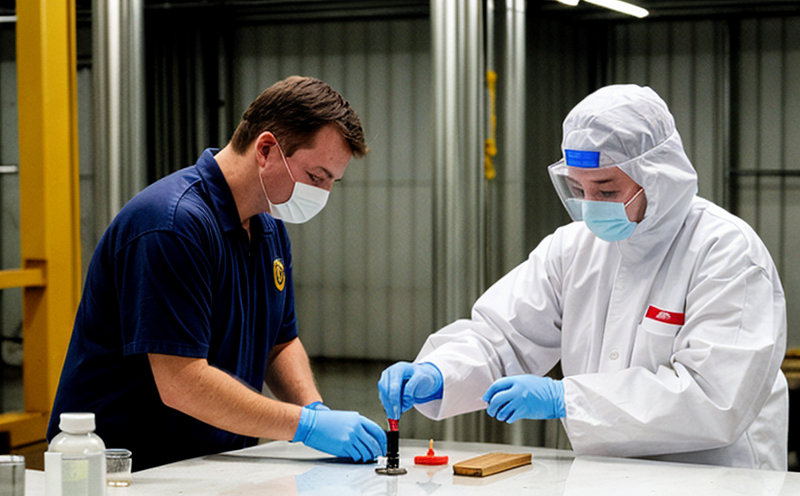ASTM D4332-19 Package Environmental Testing
The ASTM D4332-19 standard provides a comprehensive approach to testing packages for their resistance to environmental stresses, particularly temperature variations. This service ensures that packaging materials and designs are robust enough to withstand the rigors of transportation, storage, and handling conditions encountered in real-world scenarios.
Understanding the environmental factors that can affect packaging is crucial for ensuring product integrity throughout its lifecycle. Factors such as temperature extremes, humidity fluctuations, and pressure changes can significantly impact package performance. ASTM D4332-19 helps manufacturers design packages that are resilient to these challenges by providing a standardized methodology.
The testing process involves exposing specimens of packaging materials or finished products packaged in various configurations to controlled environmental conditions. This includes temperature cycling, humidity variations, and pressure changes. The goal is to simulate the package's journey from manufacturing to final delivery, ensuring it can handle real-world conditions without compromising product integrity.
During ASTM D4332-19 testing, the following steps are typically followed:
- Specimen Preparation: Packaging samples are prepared according to specified dimensions and configurations. This ensures that the test conditions accurately reflect real-world scenarios.
- Environmental Chamber Setup: The environmental chamber is calibrated to specific temperature, humidity, and pressure levels. These parameters can be varied depending on the desired stress conditions for the package.
- Test Execution: Packages are placed in the environmental chamber and subjected to predetermined cycles of temperature changes, humidity fluctuations, and pressure variations.
- Data Collection: Throughout the testing process, data is collected on how each specimen reacts to the stress conditions. This includes measurements of physical properties like thickness, weight, and flexibility as well as functional assessments such as seal integrity and product protection.
- Analysis and Reporting: After completion of the test cycles, the results are analyzed for compliance with acceptance criteria specified in ASTM D4332-19. The report includes detailed findings and recommendations for improvements if necessary.
ASTM D4332-19 is widely recognized as a key standard in the packaging industry, providing a robust framework for ensuring that packages meet stringent quality standards. By adhering to this protocol, manufacturers can enhance their product's marketability and customer satisfaction.
Applied Standards
The ASTM D4332-19 standard is part of a broader suite of testing protocols aimed at ensuring the quality and performance of packaging materials. Other relevant standards include:
- ASTM D882: Standard Test Method for tensile properties of thin plastic sheathing.
- ISO 17869: Packaging—Test methods for mechanical and physical resistance of packaging.
- EN 13432: Requirements for the recovery of paper, board, cartons, and other fibre-based packaging waste from municipal waste streams.
These standards work together to provide a comprehensive approach to evaluating different aspects of packaging performance. ASTM D4332-19 specifically addresses the environmental resistance aspect, ensuring that packages can withstand various stress conditions encountered during transportation and storage.
Industry Applications
| Application Area | Description |
|---|---|
| Pharmaceutical Packaging | Packages must protect medications from temperature and humidity changes that could affect their efficacy. |
| Fresh Produce Packaging | Ensuring proper moisture retention while preventing spoilage due to excessive condensation. |
| Electronics Packaging | Protecting sensitive components from thermal shock and humidity that can cause short-circuiting or corrosion. |
| Chemical Containers | Maintaining the integrity of containers to prevent leaks under varying environmental pressures. |
Competitive Advantage and Market Impact
Adopting ASTM D4332-19 Package Environmental Testing can provide significant competitive advantages for companies in the packaging sector. By ensuring that packages meet or exceed industry standards, manufacturers can:
- Increase product shelf life and enhance consumer satisfaction.
- Reduce waste by optimizing package design to minimize material usage without compromising performance.
- Gain a reputation for quality and reliability among customers and partners.
- Promote sustainability efforts by using environmentally friendly packaging materials that pass rigorous testing.
In the highly competitive market, these advantages can translate into increased customer loyalty and higher sales. Additionally, compliance with international standards like ASTM D4332-19 demonstrates a commitment to quality and safety, which is increasingly important for global trade.





